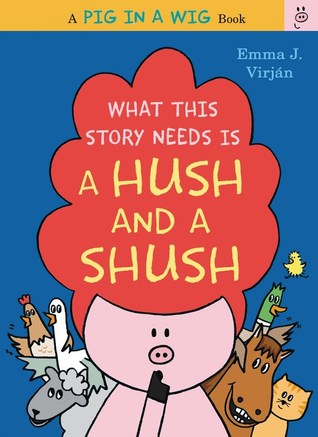
Dog’s Colorful Day: A Messy Story About Colors and Counting is a popular children’s book that works on multiple levels. It’s humorous to see Dog get messier and messier with each accident he gets into, it encourages interaction as the child can help count how many spots are on Dog, and it has bright and colorful pictures. It also helps that the book is about a dog, an animal that’s often well loved by children. The book incorporates both colors and counting to stimulate learning.
Here is a list of read aloud books with one or more of the qualities that make Dog’s Colorful Day so fun! As an added bonus, many of these books are educational as well.
Most of these titles are available for check out at East Meadow Public Library. Books recommended for ages 2-5.
Humor
The worst thing a book can do is bore a child. So make em’ laugh!
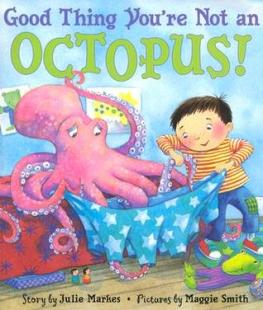
Good Thing You’re Not an Octopus! by Julie Markes (Illustrated by Maggie Smith)
Don’t like getting dressed in the morning? If you were an octopus, you’d have to put on pants for eight legs! This book is less a story and more a list of funny scenarios. However, the situations are outrageous enough to keep your child laughing while learning about different animals.

Froggy Gets Dressed by Jonathon London (Illustrated by Frank Remkiewicz)
Froggy wants to go outside to play in the snow! But every time he goes outside, his mom reminds him that he’s forgotten an article of clothing. He’ll need to take articles of clothing off to put the new item on (he needs to take off his shoes to put on his socks, and so on). Just when Froggy’s all bundled up and ready to go he realizes he’s forgotten something else…his underwear!

Bark, George by Jules Feiffer
When George’s mother tells him to bark, he quacks, moos, and meows! What could be wrong? This hilarious, multiple award winning, book will have your child laughing from beginning to end. Ask your child what animals George is mimicking. Then, invite him or her to make the animal noises with you.

Dragons Love Tacos by Adam Rubin (Illustrated by Daniel Salmieri)
Dragons love tacos. Unfortunately, they can’t enjoy their tacos with spicy salsa. If they accidentally eat any, things get a little too…hot. This book is silly all the way through, and will probably make you really want a taco by the end of it.
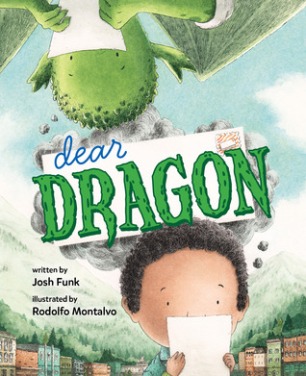
Dear Dragon by Josh Funk (Illustrated by Rodolfo Montalvo
Another book about dragons! In this story Blaise and George are pen pals who tell each other everything. There’s just one problem. One of them is a dragon, one of them is a person, and neither of them know it! What will happen when they learn the truth? A sweet story about friendship and acceptance.
Interactive
Books that children can do more than just listen to!

Can You Jump Like a Kangaroo? by Jez Alborough
Can’t get your child to sit still for a story? Not a problem. This short picture book invites him or her to stand up and jump, waddle, or scamper along.

From Head to Toe by Eric Carle
This is another book your child doesn’t need to sit still for. From Head to Toe, by beloved children’s author Eric Carle, is better if your child stands! He or she can follow along with the book while learning about what different animals can do with their bodies.

Mouse Paint by Ellen Stoll Walsh
While this book isn’t as inviting as the others, it can be made interactive. A recipient of multiple awards, including the Redbook Children’s Picture Book Award and a Publisher’s Weekly Best Book of the Year, Mouse Paint is a fun story about three little mice who make a big mess. As you read, point to the paint and ask the child what color he or she sees. When the mice mix the paints, see if your child can guess what new color they’ll make before turning the page. For added fun, use real paint and follow along with the mice!
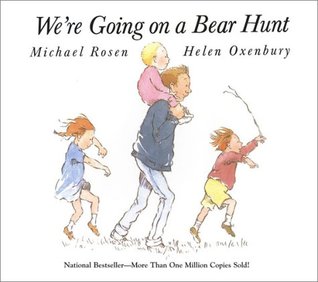
We’re Going on a Bear Hunt by Michael Rosen (Illustrated by Helen Oxenbury)
An award winning classic, this book is often read in a sing-song way. Children will swishing-swashing and stumble-tripping all the way through until the end, where they will encounter a big, furry bear!
Illustrations: Pop Ups
You can’t have a good picture book without good art. All of the titles on this list have appealing illustrations. Pop up books take it up a level. I find that they never fail to dazzle children.

Butterfly, Butterfly: A Book of Colors by Peter Horáček
This book tells the endearing story of a girl named Lucy who’s looking for a butterfly. Lucy encounters different types of bugs in the park. Just when she’s ready to give up, out pops her butterfly. The last page of this book features a butterfly pop up that never fails to delight children.

Under the Ocean by Anouck Boisrobert and Louis Rigaud
This book has lovely prose and gorgeous scenery. Your child will sail through stormy seas and arctic landscapes. This book is great for stimulating your child’s imagination.
And More!
More great titles to read aloud!
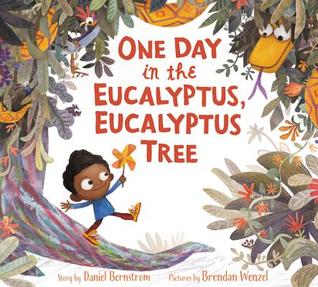
One Day in the Eucalyptus, Eucalyptus Tree by David Bernstrom (Illustrated by Brendan Wenzel
A sneaky snake gobbles up a boy with a whirly-twirly toy, but the boy is clever! He has a plan for escape. The text is appealingly rhythmic and the colorful illustrations are perfect for the jungle setting. Publisher’s Weekly recommends this book for ages 4 and up.
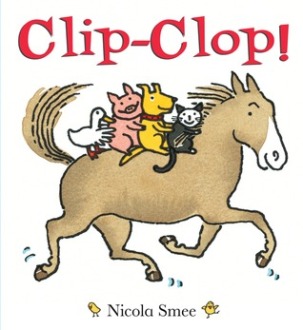
Clip-Clop! by Nicola Smee
Mr. Horse gives some of his friends a ride. Clip clop, clippity-clop! This book’s use of repetition, as well as the surprise ending, will keep your child engaged.

Dog’s ABC: A Silly Story About the Alphabet by Emma Dodd
Don’t forget about Dog! His adventures continue in this book about the alphabet.
Reading Aloud Tips
- Try to be as consistent as possible.
If you can, set a scheduled time to read aloud to your child daily.
- Don’t get frustrated if reading aloud doesn’t work right away.
If you’re trying interactive or fun books and your child still doesn’t enjoy reading aloud, don’t get frustrated! These listening and literacy skills can be learned over time. “Remember: The art of listening is an acquired one. It must be taught and cultivated gradually—it doesn’t happen overnight” (Trelease, 2013, p. 73).
- Allow your child to read his or her favorites.
Yes, reading the same book over and over again can be tiring. You might be afraid the child isn’t learning enough if you’re reading the same book over and over, but don’t be! Even if it’s the same book, the child is still practicing and that book is encouraging a love of reading.
- Be aware of the stigma towards boy readers.
As boys grow older, many stop reading. As a result, girls usually have higher reading and literacy levels. “The myth that boys won’t read or that it’s not “cool” for boys to love reading plays a big part in how these low levels come to be” (Allyn, 2011, p. 29). Try not to let these ideas get into your head as a parent. Encourage a love of reading in your son from a young age the same way that you would for a daughter.
Further Reading
- Scholastic Recommended Reading
- School Library Journal Top 100 Picture Books
- A Diverse Book List for the Under-Five Set
- Reading Aloud Activities
References



